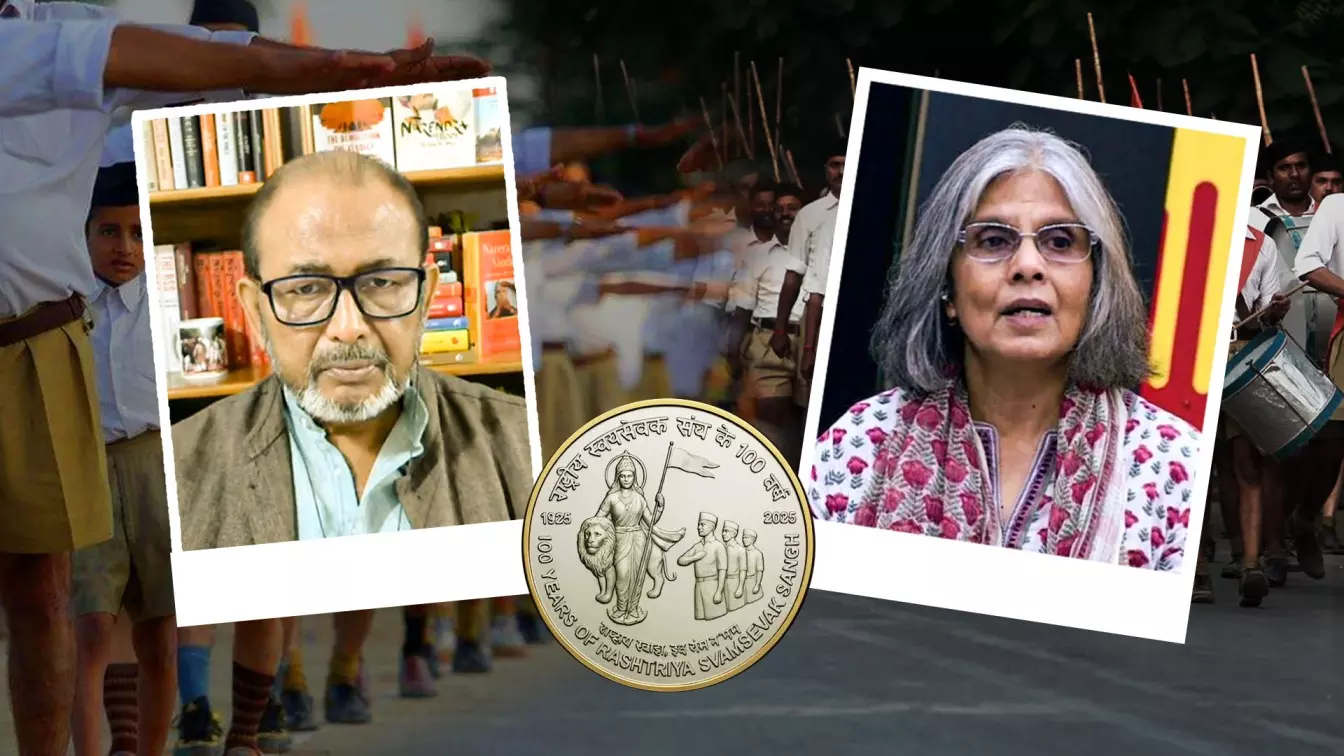
Tanika Sarkar shared insights on the RSS's organisational structure, social reach, and the use of history and culture in shaping Hindu nationalist thought.
How RSS has reshaped India’s history, politics: Historian Tanika Sarkar explains
Professor Sarkar explores the evolution of the RSS, the shakha system, and its use of history in shaping Hindu nationalist ideology

The Federal spoke to historian Professor Tanika Sarkar to discuss the evolution, ideology, and influence of the Rashtriya Swayamsevak Sangh (RSS) over the past century. She shared insights on its organisational structure, social reach, and the use of history and culture in shaping Hindu nationalist thought.
How would you describe the role and importance of the shakha in the RSS framework?
The shakha, which is the basic unit of the RSS, has grown to more than 80,000 across India. While its numerical and social reach has expanded, its role is no longer as critical as it was in the early decades up to the Ram Janmabhoomi movement.
The shakha initiated a process of “me to we,” as Prime Minister Modi described, but it also functioned in reverse, shaping spaces and communities through man-making programmes. Every area, school, temple, and neighbourhood became a site of ideological cultivation. The RSS trains leaders across its 46 branches, including the BJP and Vishwa Hindu Parishad (VHP), with history being the only distinct knowledge branch among the 36 affiliates.
Even those not formally part of the shakha are informally trained to propagate its ideology in daily life, workplaces, and family circles. This slow, patient expansion creates a pervasive influence across society.
Also Read: RSS centenary celebrations: Modi, Bhagwat rely on duplicitous rhetoric, gloss over real issues
Does the RSS shakha rely on physical gatherings, or could it transition to a more technological presence?
While online programmes and exercises are now possible, face-to-face shakha meetings and physical activities remain essential. Physical exercises, games, and drills build discipline, self-confidence, and community bonding elements that cannot be fully replicated digitally.
Even today, people enjoy attending the shakha because it fosters camaraderie and direct engagement. For instance, young women in the Rashtriya Sevika Samiti received lessons by post on mobilising public opinion at home, but the physical, collective experience remained irreplaceable.
Why does the RSS continue physical drills, despite their apparent lack of coordination?
The drills, including marching and coordinated displays, are rooted in tradition. They instill a sense of empowerment, discipline, and community participation. For young women, marching alongside rituals like worshipping an eight-armed Durga reinforces a symbolic readiness to defend the nation, even if no actual combat occurs.
These activities also cultivate an understanding of a clear “enemy” in ideological terms, contributing to the formation of committed cadres.
Also Read: Diversity, not ‘us vs them’ mindset, India’s tradition: RSS chief Bhagwat
How has women’s participation evolved within the RSS?
Initially, from its establishment in 1925, women had no official role. Pressure from family members led to the creation of the Rashtriya Sevika Samiti, later complemented by Durga Vahini, the women’s wing of VHP. The focus has been on self-defense, ideological training, and active participation in social programmes, expanding women’s role significantly post-independence and after the Ram Janmabhoomi movement.
How does Hindu nationalist literature like 'Anandamath' influence RSS ideology?
Anandamath, written by Bankim Chandra Chattopadhyay, combines religious and militant nationalist imagery. Its communal message, powerful language, and creation of the motherland goddess Bharat Mata resonate deeply within RSS thought. Reciting Vande Mataram, central to the novel, is seen as a patriotic and religious act, blurring lines between nationalism and religion.
The novel’s militaristic rhythms and depiction of a divine mother shaping historical and national imagination reinforce ideological and emotional attachment among RSS cadres.
Also Read: RSS at 100: Hindutva is an ideological camouflage for its Brahminical core
How has the RSS expanded into different societal sectors over the decades?
After facing setbacks post-Gandhi assassination, the RSS strategically expanded into schools, universities, trade unions, temples, and civil services. Its affiliates ensure ideological indoctrination accompanies all social and cultural work, distinguishing them from leftist organisations, which often focussed solely on labour or social work.
This expansion reflects a dual strategy: the “war of position” for long-term consent building and the “war of manoeuvre” for immediate political objectives, often executed through VHP and BJP affiliates.
How does the RSS use history to serve its ideological agenda?
The RSS reshapes history to reinforce Hindu nationalist ideology. They exclude the Muslim period from school curricula and reinterpret Mughal rulers as tyrannical invaders. Hindu empires are sanitised and glorified. These narratives frame Muslims as perpetual outsiders and establish a foundation for Hindutva-centric nationalism.
The reinterpretation extends to governance and law, emphasising duties over rights and promoting indigenous frameworks like Bharatiya Naya Samhita over constitutional or colonial legal constructs.
Also Read: Jairam Ramesh attacks RSS on centenary using Gandhi, Patel quotes
How does this ideology manifest in contemporary governance?
The emphasis on duty is visible in renaming Rajpath as Kartavya Path, and government buildings will follow names reflecting service and duty, such as Kartavya Bhavan and Seva Bhavan. This reinforces the narrative that citizens must fulfill obligations before asserting rights, reflecting traditional hierarchies and ideological priorities.
(The content above has been transcribed from video using a fine-tuned AI model. To ensure accuracy, quality, and editorial integrity, we employ a Human-In-The-Loop (HITL) process. While AI assists in creating the initial draft, our experienced editorial team carefully reviews, edits, and refines the content before publication. At The Federal, we combine the efficiency of AI with the expertise of human editors to deliver reliable and insightful journalism.)

